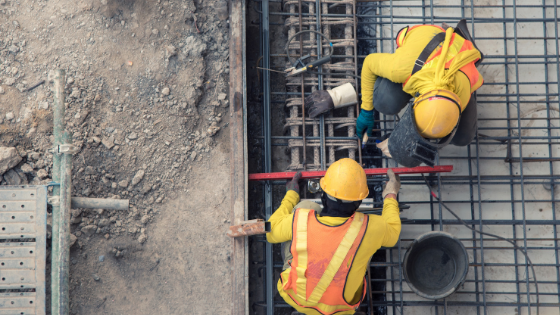Playing with electricity is a risky proposition. But in an industry like construction, where electrical hazards are part of daily operations, electrical hazards have a much higher chance of turning into fatal accidents.
In fact, electrocutions are part of construction’s so-called Fatal Four, the four safety hazards resulting in more than half of all fatal injuries in the construction industry each year.
Don’t let your workers fall victim to an avoidable accident. Here are four key tips for better electrical safety in a construction site.
Create a Policy and Put it In Writing
First, you need to create an electrical safety policy – and put it in writing.
You know what it takes to create a safe work environment. The problem is that you’re not the one on the front lines implementing the policy. Your employees are.
They’re also the ones most at risk. So if they don’t know what the safety policy is, you can’t expect the policy to protect them.
To that end, collaborate with your workers to create a comprehensive electrical safety policy. OSHA’s electrical hazard standards are a good reference. Then, put the whole policy in writing and post it in places your employees can easily reference it.
Train Your Employees
From there, you need to train your employees in the appropriate electrical safety measures.
As we said, your employees are on the front line of implementing safety in the workplace. You can give them all the tools to stay safe, but if they don’t know how to use them, it won’t do you any good.
For example, do your workers understand the ins and outs of lockout/tagout procedures? If they haven’t been trained, you can’t expect them to implement these practices with any regularity.
Check (and Test) Your Equipment
Sometimes, though, the tools also matter. Or, in this case, the equipment.
Where electrical safety is concerned, equipment is critical. Workers cannot safely work with electrical wiring if they don’t have the right equipment.
Unfortunately, even the best equipment wears out eventually. If you invested in good safety equipment but haven’t checked it in the recent past, it’s just as much of a risk to your workers.
To that end, make sure to check your equipment regularly. Any equipment that’s old, worn out, or at risk of breaking down should be taken out of circulation immediately. This also applies to personal protective equipment, even if employees bring their own protective gear.
Conduct Regular Risk Assessments
This goes hand-in-hand with conducting regular risk assessments.
Let’s be honest: construction is a dangerous industry. The fatal injury rate for construction is higher than the national average for all industries, and one of the most common safety hazards is electric shock.
Don’t gamble with your workers’ health and wellbeing.
Before any work begins, you should conduct a thorough risk assessment to determine whether the site is safe. This should also tell you the potential risks that could arise at the site and what steps your workers should take to avoid them.
That way, when workers begin the project, you can ensure that they know exactly what safety protocols to follow.
Creating an Electrical Safety Plan On a Construction Site
The most important step in creating electrical safety in a construction site is to be diligent.
The truth is, hazards arise all the time. If your team isn’t dedicated to constantly looking for and preventing hazards, inevitably, someone will get hurt.
